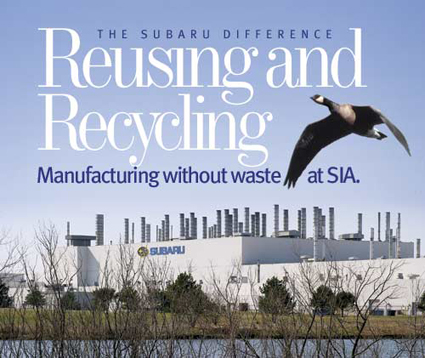GE’s Electric Bus (Source: GE)
The Inspired Economist (IE) recently interviewed GE’s Bob King, a 30-year veteran of the company who has driven the company’s research in the advanced electric and hybrid vehicle space.
With the energy crisis of the late ’70s, GE began to aggressively pursue the development of an electric test vehicle, creating a prototype that included nearly all the components that can be found in today’s hybrid vehicles. Bob worked on this, and also on the development of GE’s hybrid bus in 1996. The bus established the emissions requirements for NYC’s hybrid transit buses and paved the way for those that you see on the roads today.
Bob has witnessed the cyclical nature of the country’s demand for energy-efficient cars and the changes in technology that have resulted in advancing the industry. Here’s what he had to say to IE.
IE: What is GE’s hybrid vehicle? Can you describe it? It’s USP?
BK: GE researchers are working on hybrid systems and battery technologies for a hybrid locomotive and for heavy-duty vehicle applications, which we believe could cascade down and help accelerate key advancements for Plug-in Hybrid Electric Vehicles (PHEVs) in the automotive sector. In fact, we also have been performing some research in conjunction with the lithium-ion battery maker A123Systems to support their battery development for automobile applications.
IE: How is it unique or different from other hybrids?
BK: One of the unique aspects of GE’s research in hybrid vehicles is the development of a dual battery system, which combines the chemistry of two different batteries into a single system. One issue with batteries is that each typically comes with a trade-off between power and energy storage capacity. For example, lithium-ion batteries can provide a lot of power, but are not ideal for storing a lot of energy. Conversely, sodium batteries can store a lot of energy, but are not optimal for delivering a high degree of power.
We think that combining the best attributes of power and energy dense batteries into a dual system will provide a more practical, economical battery solution for hybrid vehicles. In addition to optimizing performance, we also believe this type of system could provide some inherent benefits for reducing the size and cost of the battery. Reducing the size and cost of batteries are two key challenges that need to be met to make the widespread commercialization of hybrid vehicles possible.
IE: Can you tell us more about your work with the hybrid bus? Where can we see this now?
BK: We are testing our dual battery concept as part of a $13 million hybrid bus project with the Federal Transit Administration. The bus is really a mobile lab, if you will, which resides on site at GE’s research headquarters in upstate New York. We’re getting ready to perform the first demonstration of the bus with a dual battery system in the coming weeks.
IE: In your opinion, what is the future of electric vehicles? What is GE’s role in this?
BK: With the steady improvements we have seen in battery and ultracapacitor energy storage technologies during the past three decades, it’s no longer a question of “if” but “when” electric vehicles go mainstream. While technology challenges exist given the size, cost and lifetime of batteries, the pace of advancement we have witnessed in recent years, gives me strong reason to believe that you could begin to see electric vehicles penetrate the car and possibly the light –medium duty truck market within the next decade. GE will continue to play a role in accelerating the pace of new hybrid system, battery technology, and high temperature, high energy density capacitor technology advancements that will be needed to get us there.
GE’s experience with batteries dates back to Thomas Edison in the early 1900s, when he was working to enable battery-powered electric vehicles. I have personally spent some 30 years working on a variety of electric (EV) and hybrid-electric (HEV) and Plug-In Hybrid Electric (PHEV) vehicle projects for GE. We have acquired a lot of knowledge and experience in electric power and propulsion systems that will play a critical role in supporting future developments.
IE: How can the homeowner plan for this “electric” vehicle future? Can GE’s partner companies or products help in anyway?
BK: The homeowner will ultimately be in the driver’s seat. For electric vehicles to succeed, there has to be a market. Right now, the cost, size and lifetime of battery technology is not where it needs to be, to introduce electric vehicles at an affordable price point. But these are exactly the challenges that GE and its project partners are working to address. The goal is to accelerate the needed advancements, so that we can introduce EVs more quickly.
IE: What are GE’s plans for the “new energy” economy? What else is GE doing with regard to clean tech?
BK: GE is involved across a full spectrum of clean technologies. In addition to developing next generation hybrid and battery technologies, we are driving new advancements to improve and enable higher penetrations of wind and solar power on the grid. In fact, we have a Smart Grid Lab that is taking a look at the technology needs of the grid from the power plant all the way down to the home. And in the home, we’re developing next generation OLED lighting and smart appliances that will help reduce homeowners’ energy consumption.
We’re very excited about our OLED lighting program. OLEDs are thin, flexible sheets of plastic that light up with an electric charge. They are mercury free and have the potential to surpass the efficiency levels of energy efficient fluorescent lighting.
IE: Given the expense of electric batteries for cars, how will GE make its products affordable for the consumer?
BK: The key will be to develop new technologies and approaches that improve the performance and lifetime of the battery, while reducing its size and cost. Again, we think our dual battery concept will provide an optimal way to get us where we need to be.
In this video, Bob King provides an overview of the kind of work that GE does in their Global Research Hybrid and EV test laboratory.
https://youtube.com/watch?v=7XqrdDuDgEU%26hl%3Den%26fs%3D1
Here is a link to GE’s technology blog.




